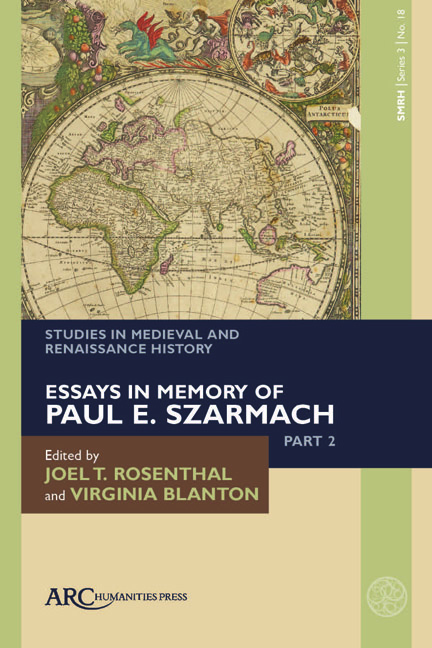Book contents
- Frontmatter
- Contents
- List of Illustrations
- Introduction
- The Development of Constantinian Themes and Their Manifestation in Writings and Coinages of Early England
- Echo and Icon : Life in Stone at Bewcastle, Cumbria
- Jerome of Strido at Chelles: The Legacy of Quedlinburg Codex 74
- Revisiting the Maaseik Zoomorphic Embroideries
- The Old English Version of Alexander’s Letter to Aristoteles and its Use of Binomials
- Agency and Obedience : The Afterlife of St. Swithun in Anglo-Saxon England
- B. and the Vita Harlindis et Renulae
- Wheelock’s Bede and Its Supplementary Materials : Goals and Methods
Wheelock’s Bede and Its Supplementary Materials : Goals and Methods
Published online by Cambridge University Press: 13 April 2024
- Frontmatter
- Contents
- List of Illustrations
- Introduction
- The Development of Constantinian Themes and Their Manifestation in Writings and Coinages of Early England
- Echo and Icon : Life in Stone at Bewcastle, Cumbria
- Jerome of Strido at Chelles: The Legacy of Quedlinburg Codex 74
- Revisiting the Maaseik Zoomorphic Embroideries
- The Old English Version of Alexander’s Letter to Aristoteles and its Use of Binomials
- Agency and Obedience : The Afterlife of St. Swithun in Anglo-Saxon England
- B. and the Vita Harlindis et Renulae
- Wheelock’s Bede and Its Supplementary Materials : Goals and Methods
Summary
ABRAHAM WHEELOCK (1593–1653) was the first individual to hold a university appointment dedicated to research on the earliest phase of English history and the study of texts written in the Old English language. In the late 1630s, the noted antiquary Sir Henry Spelman (ca. 1562–1641) provided the funding for Wheelock to take up a lectureship in “British and Saxon Antiquities” at the University of Cambridge. Spelman's primary goal in creating the lectureship was to enable Wheelock to conduct research on the rich array of manuscripts of the Anglo-Saxon period available in Cambridge. Having been the university's librarian since 1629, Wheelock enjoyed privileged access to the university library's own collection; he also closely studied manuscripts in several of the university's constituent colleges, in particular, Corpus Christi College and Trinity College. The major product of Wheelock's tenure of the lectureship was a magnificent edition of the Venerable Bede's Ecclesiastical History of the English People that issued from the university's presses in 1643 and that displayed Bede's eighth-century Latin text in parallel columns with the Old English translation of the Ecclesiastical History made in the late ninth or early tenth century. Wheelock supplemented his edition with extensive notes that he appended to many of the individual chapters of Bede's work. These notes incorporate numerous quotations from a broad array of the Old English texts that Wheelock encountered in the manuscripts he studied.
As he emphasizes in the book's prefatory materials (comprising two epistles dedicatory and a preface to the reader), the major goal of Wheelock's publication was to present evidence that, in his view, demonstrated the historical basis of the doctrines and practices of the Anglican church against its Roman Catholic counterpart. This was an enterprise in which Wheelock had a personal and professional stake: he had been ordained as an Anglican priest in 1622 and was the vicar of Cambridge's church of the Holy Sepulchre, the twelfth-century round church located near the intersection of Bridge Street and St. John's Street.
- Type
- Chapter
- Information
- Studies in Medieval and Renaissance HistoryEssays in Memory of Paul E. Szarmach, Part 2, pp. 161 - 203Publisher: Amsterdam University PressPrint publication year: 2024

